




























Carved by hand, honed by generations.
Beneath sturdy beams and smooth finishes lies something deeper, a commitment to excellence that time cannot erode. Swingit Playsets are more than places to climb and swing; they’re the result of generations honing a craft, ensuring that































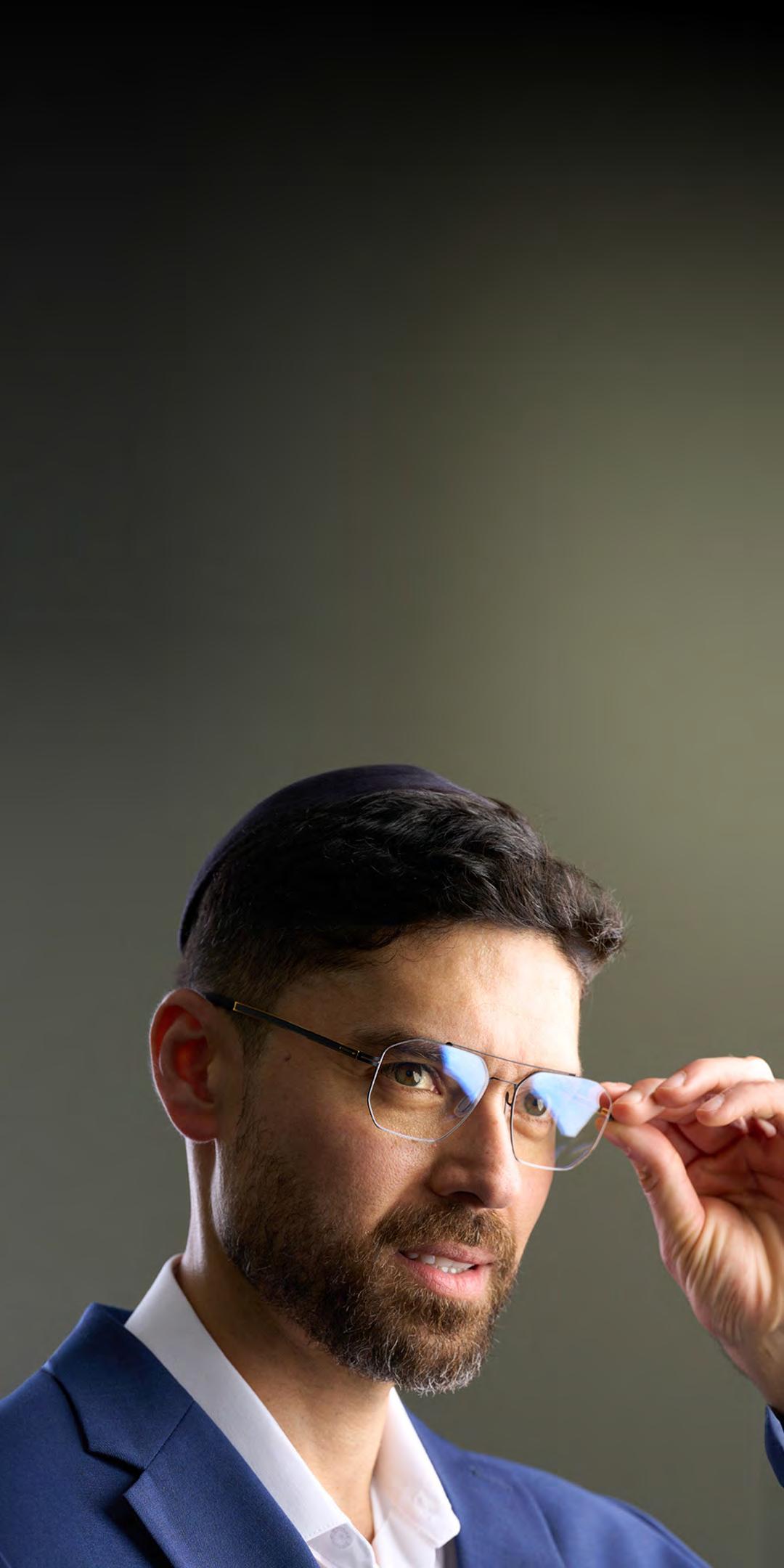


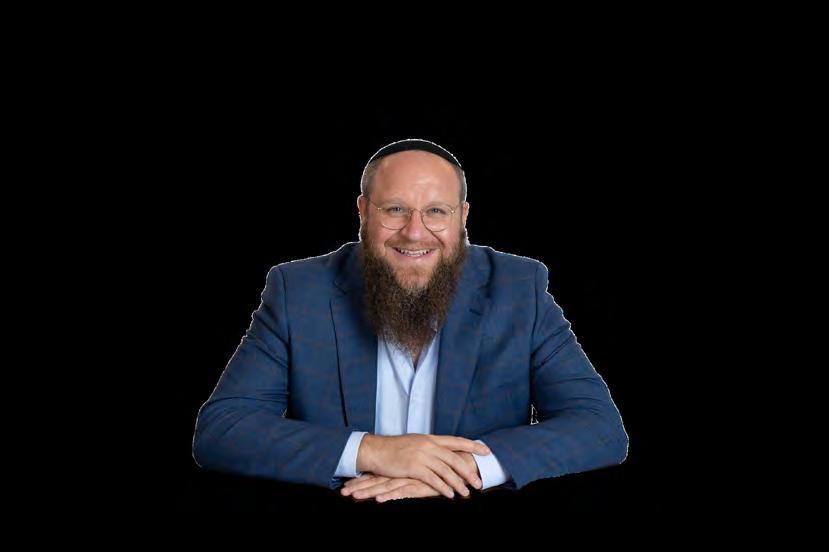

















































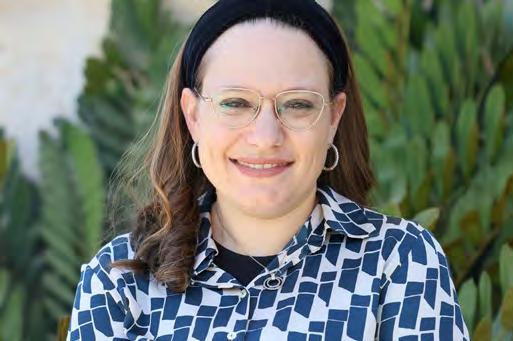



© The South Florida Community Voice Magazine. All rights reserved. Reproduction in printed or digital form in whole or in part in any form without prior written permission is prohibited. The publisher reserves all right to edit all articles for clarity, space and editorial sensitivities. Submissions cannot be returned to sender. The South Florida Weekly Magazine is not responsible for the cash flow of any advertised product or service that appears in these pages. The South Florida Community Voice Magazine assumes no responsibility for the content of articles or advertisements in this publication, nor for the content of books that are referred to or excerpted herein.

By Sivan Rahav Meir
A few years ago, a rabbi visited a school in Alaska to speak about Judaism. At the end of his lecture, he asked if anyone in the room was Jewish. A young girl timidly raised her hand and declared, “I am.” The rabbi was deeply moved to encounter a Jewish soul in such a distant place but struggled with what he could possibly say to her in the few brief moments before he had to leave for his flight. How could he meaningfully connect her to her heritage?
Then, an idea struck him. “You probably know,” he began, explaining to the girl, “that every Friday, Jewish women around the world light Shabbat candles before the sun sets. The ritual begins in Australia, moves through Israel, France, Britain, and much later reaches New York. And finally – it reaches Alaska. When the entire world already basks in the peaceful glow of Shabbat, it awaits your candle. Yours is the last Shabbat candle to be lit, completing the global tapestry of light and peace. From today onwards, you and your mother will complete this beautiful cycle.”
This week’s Torah portion, Parashat Tetzaveh, opens with the command to light the Menorah – “to kindle a perpetual light.” Our sages teach that each of us is called upon to ignite our own flame in the world. While we may not be that lone child in Alaska, her story reminds us that we each have a unique role and mission: to
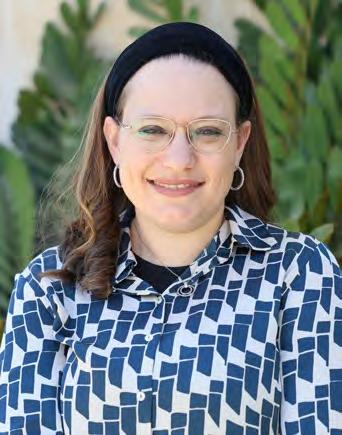
cast a light that only we can shine, wherever we find ourselves.
The parashah of Tetzaveh deals extensively with clothing. Are we supposed to make a blessing when putting on clothing?
Every morning, right at the start of our morning prayers we say the brachah of “malbish arumim.”
Rabbi Avraham Yitzchak HaKohen Kook wrote a commentary on the siddur and explained this blessing by saying that we are giving our thanks to God for two reasons. Firstly, for the very fact that we have clothes to wear and that they are not completely worn out. Secondly, for the fact that we are humans rather than animals, and understand the need for clothing. Rabbi Kook explains that as opposed to animals, man is blessed with a moral sensitivity and a refined soul, and he give thanks to God for the understanding
that he can live a life that is more honorable than that of animals. Man has to wear clothes, animals do not.
Rabbi Kook writes that we thank God for the “refined spiritual sense that God planted in our souls that causes us to wear honorable garments.”
The Jew Seeks Meaning
Man’s Search for Meaning is the name of the wonderful work written by Holocaust survivor and psychiatrist Viktor Frankl. He explained how the divine image within humans, their soul, the meaning in their lives – gives them strength to face challenges. It seems that these days a new book is being written: “The Jew Seeks Meaning” or perhaps “Man Seeks Judaism.”
These days, we are seeing many “Viktor Frankls” returning from Gaza. They don’t write books; rather, they post stories and social media updates. This week I started collecting these modern-day legends.
One example is Eliya Cohen who offered to swap places with another hostage (His father related: “When they informed him about his release, Eliya offered to switch with one of his friends who was physically and mentally weaker than him and remain captive in his place. The terrorists refused.”), or Omer Shem Tov who observed Shabbat in Gaza (His mother Shelly recounted: “He only had a flashlight, and he made sure






not to turn it on during Shabbat so as to symbolize and honor the Sabbath.”). And of course – the story of Agam Berger which has already become known worldwide (The Wall Street Journal recently published an article by Rabbi Meir Soloveichik explaining to the American public the significance of her Shabbat observance in Gaza).
Shai Graucher became known during the war for his gifts and assistance to the bereaved families, the wounded and the hostages.
Recently, he has observed an interesting phenomenon: he brings an iPad - they ask for tefillin. He brings a cell phone - they ask for Shabbat candlesticks. This week it happened with hostage Ohad Ben Ami from Kibbutz Be’eri. Ohad asked for tefillin, and then on
Monday, he asked to do Havdalah. Havdalah is performed on Saturday night, but Ohad wanted to learn how the blessing so that he would be ready for the following week. Ohad explains that he became more religious in Gaza. In videos that were posted, he speaks powerfully about faith, about God, and also about the Havdalah that hostages did, which gave him strength in captivity. He finishes by singing “Am Yisrael Chai.”
And here’s another true legend: Keith Siegel shared in a video this week that he tried to say a blessing over everything he ate in Gaza, but didn’t know how to make the blessings. He simply said “borei minei mezonot” over every food. When he returned home, his family asked what special food he wanted them to prepare for Friday
night, which would be their first meal together. Keith said: “No need for special food. First of all I want a kippah and Kiddush.”
His wife Aviva, who was released in the first deal, recounts in another viral video, with tears: “The kidnappers asked me to pray with them. I said to myself: I will not pray to Allah. I pretended with my lips, but didn’t actually pray with them. I am so proud of myself for that.”
This is a very partial list, but we can definitely see a pattern. Everyone is invited to think about what it means.
Translated by Yehoshua Siskin, Janine Muller Sherr
Want to read more by Sivan Rahav Meir? Google The Daily Thought or visit sivanrahavmeir.com





UNIVERSITY IN ISRAEL UNDERGRADUATE PROGRAM
• Immersive Torah Studies in a World Class Beis Midrash Environment with World Renowned Rabbeim that is open 24 hours
• Academic Degrees in Partnership with Leading Israeli Research Universities • Vibrant Student Experience and Residence Life ACHIEVE EXCELLENCE IN TORAH WHILE EARNING A YU DEGREE IN PARTNERSHIP WITH TOP ISRAELI UNIVERSITIES




• Academic Degrees in Partnership with Leading Israeli Research Universities • Vibrant Student Experience and Residence Life ACHIEVE EXCELLENCE IN TORAH WHILE EARNING A YU DEGREE IN PARTNERSHIP WITH TOP ISRAELI UNIVERSITIES
• Immersive Torah Studies in a World Class Beit Midrash Environment with Top Tier Rabbeim and Teachers.

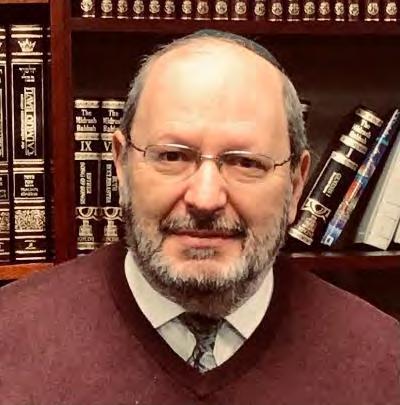
As we reimagine the future trajectory of our Jewish day school and yeshiva community, I can’t help but reflect on the current state of affairs which these institutions enjoy and experience. In fact, it is against this backdrop of reality that I write this blog and formulate several thoughts and ideas about the future of our Jewish day school community.
My father z”l, of blessed memory, would often say that knowing where you are going in the future is inspired and informed by our past. In other words, know, understand and appreciate the yesterday and today, in order to inspire and achieve the tomorrow.
In order to envision or re-envision the future of our Jewish day schools and yeshivot, we must first understand, appreciate, and celebrate their current impact, status, and disposition.
Over the past many decades, our Jewish day schools and yeshivot have experienced a wide array of academic, social, and communal successes and positive accomplishments and achievements.
By Chaim Y. Botwinick
From increasing the effective teaching of limudei kodesh and chol in the classroom, to inspiring students with different learning styles, these institutions have truly succeeded in challenging the intellect and minds as well as touching the hearts of thousands of students committed to Torah learning and study; and, enriching their knowledge and understanding of secular subject areas.
What began as a grand and bold Jewish communal experiment in 1886 with the establishment of Etz Chaim of New York, the first allday Jewish day school, has now evolved into one of the most successful Jewish educational entities and milestones in history.
Although it is essential that we celebrate these amazing successes, our day schools and yeshivot are currently confronted with a variety of very serious and somewhat daunting challenges of monumental proportion and magnitude.
From a day school administrative and operational perspective, they include, affordability, the cost of operations and competitive fundraising and philanthropic challenges. From an educational perspective, they encompass the paucity of high-quality teaching personnel, the provision of special learning environments for students with varying learning styles, and the lack of high-quality c-suite trained senior educational leaders, to name a few.
In spite of these aforementioned challenges, many of our day schools and yeshivot are indeed
growing and flourishing with increased pupil enrollment, albeit in the face of ever-changing, evolving, growing challenges and concerns.
The question, however, which many of us may be asking (or should be asking), is whether this current status or matzav is sustainable and what do these challenges suggest for the future of this critically important communal institution.
Finally, it is important to note that these challenges do not include today’s zeitgeist or cultural milieu which include the growing disintegration of the nuclear family, increased child rearing challenges and the variety of exigencies stemming from the lack of parental role modeling for our children exacerbated by the waning of laudatory middot and derech eretz on the part of a growing segment of our youth (again, just to name a few).
Yes, there are leaders who will posit that our Jewish community is just a mirror image of our society, and that we should be satisfied and grateful for the status quo. To these individuals, my response is relatively simple and straightforward – as an am kadosh, mamlechet kohanim and as an ohr la’goyim, our Jewish community has a much higher calling, and we can and should do better, much better!
Let’s respectfully keep in mind that offering excuses that we are just a mirror image of the general community or society is not a very satisfying, convincing or even compelling consolation or argu-

ment. They are just common and convenient excuses which enable people to kick the can down the road instead of confronting and dealing with today’s realities as well as facing and confronting the future head-on.
In light of these realities and the accepted notion that the status quo may in all probability, not be sustainable, I pose the following question – as Jewish communal and educational leaders, if we were to have our druthers, what changes would we begin to introduce and how would we envision or re-envision the future of our day schools and yeshivot in order to responsibly and strategically ensure their vitality, viability, impact and effectiveness; and, what type of strategic thinking and planning must our community now engage in order to prepare for their future?
Reimagining and Re-Envisioning our Day Schools and Yeshivot by 2040
First and foremost, I respectfully and humbly suggest that we create a paradigm shift in the manner we structure and organize our Jewish day schools and yeshivot.
Although the concept of institutional mergers and consolidations of our schools were briefly explored in the early seventies by a few bold communities, it was a premature concept, and it ended up getting bogged down in communal politics, institutional ego, and the lack of incentives or carrot/stick opportunities.
Unlike public education, the Jewish day school/yeshiva community is voluntary in nature. This makes the formulation and
enforcement of communal educational standards and requirements a bit more challenging. This includes the autonomous nature of these institutions and their compliance to specific requirements in order to qualify for state/federal funding, local federation and foundation grants, and adherence to the variety of new and emerging ideologically anchored accreditation standards and requirements. But at the end of the day, we all know and recognize that each of our Jewish day schools and yeshivot may choose to ”make Shabbos” as they please.
These are just several overarching realities which impact the reimagining or revisioning of these institutions.
My attempt to encourage and re-envision the concepts of mergers and consolidation is inspired in part by the current DOGE movement now sweeping the United States and an exploration of what a system or network of Jewish day schools and yeshivot would look like if economies of scale were to be in place, adjusted or “right sized”.
Although the jury is still out regarding the impact of DOGE, preliminary findings suggest that its future trajectory will benefit our economy in numerous positive ways.
As envisioned, my proposal is divided into two broad, discrete, and at times overlapping challenges.
One relates to the physical and material nature of our schools. They include structure, administrative and non-educational strategic operational aspects of
day schooling; the second focuses upon the educational dimension impacting our schools, including the teaching-learning process –the manner in which we teach our students and the ways in which our students learn.
As envisioned, concerted efforts should be attempted or encouraged to incentivize the consolidation and merging of day schools and yeshivot that are in close geographic proximity to one another and with those that share the same stakeholder demographic as well educational and religious hashkafa.
The details of these mergers and consolidations will require a shared vision and an inordinate amount of time, grit, commitment, passion, and communal planning, as well as a true sense of urgency and a willingness on the part of school leadership and their stakeholders to merge and consolidate. It will also require the “parking” of institutional ego at the door, a reality which many of our schools and communities will have some level of difficulty realizing and accepting.
Remember, the purpose of these mergers and consolidations are not to diminish the role, visibility, or institutional ego of these institutions, but rather to create strong, viable, and healthy schools with sustainability and unlimited capacity. We must put our students first.
The exact details of how to effectuate these mergers and consolidations from a political, commu-

nal, educational, and structural perspective requires a well-developed vision, blueprint, and a comprehensive plan.
Even if a community embarks on this initiative with a small cluster of day schools and yeshivot, there will be much to be learned and gained. It can serve as a potential replicable model for other communities to emulate.
Building a Jewish day school community culture which necessitates, inspires, and motivates greater economies of scale, can only serve these institutions well as we move forward into the future.
Consolidation of Administrative and Back-Office Responsibilities
As we move into the future towards 2040, another economies of scale opportunity may include the sharing of technology and human resources in the areas of fundraising and financial resource development.
This can include the planning and implementation of mega fundraising events, the proceeds of which will be allocated, shared or apportioned based upon a per capita formula or other creative methods of disbursement. .
In addition, grant writers can be jointly hired and engaged to work with groups or clusters of schools in order to leverage local, state, and federal funding as well as from family and private sources of funding.
Eventually, I envision the establishment of a “2040 National Jewish Day School Philanthropic Roundtable” in order to help iden-
tify needs and resources on the national, regional and local levels and catalyze future plans for consolidated day school and yeshiva fundraising programs, initiatives, and opportunities.
Again, the name of the game will be to create consolidated communal and institutional partnerships, the sharing of resources and an equitable distribution of resources and proceeds…..all based on trust and a shared communal vision.
Beyond these two significant opportunities, the future viability of our day schools and yeshivot, their future viability, effectiveness and efficiency may require joint purchasing, payroll administration, plant maintenance, contract negotiations, consolidated insurance programs, shared IT and technology via networking, and joint/consolidated human resources in the areas of teacher-sharing, cross-curricular learning and other specially designed and modeled environments which enhance cost-saving opportunities.
As we move towards 2040, the Jewish day school community will be challenged to reinvent itself as never before imaginable.
Yes, this is a bold statement. But it is one which is anchored in today’s and tomorrow’s realities, unmet needs and demands..
With the meteoric growth and expansion of AI technology and its educational applications and implications, it will be imperative for our Jewish day schools and ye-
shivot to learn how to best utilize, exploit, and apply this technology to these institutions.
To be sure, AI has become so ubiquitous that it will be virtually impossible to ignore, circumvent, or diminish its application and significance. This is where comprehensive and extensive PD (professional development) programs will be essential and indispensable for our administrators, teachers, educators, and communal training institutions.
It is therefore imperative for our day school and yeshiva leadership, administration, and faculty to understand and appreciate its use and utility as well as its impact and relationship to the student-learning process and to the domain of effective teaching and instruction.
The challenge will be which state-of-the-art AI technology presents the best and most dynamic and personalized learning opportunity for our students.
These modalities will include greater flexibility in developing lesson and unit plans, more immediate feedback regarding student academic performance, the development of “personalized” learning platforms, more sophisticated blended learning programs, the engagement of AI substitute teachers and tutors, student remediation, teacher, instructional and administrative performance assessments and corresponding metrics based upon AI generated algorithmic measurements, the creation of non-traditional classroom environments making teaching and a host of other AI learning opportunities more conducive and

student-centered, and a variety of other 21st century educational advantages – way to numerous and detailed for this blog.
It should be quite obvious that the impact of a re-envisioned day school and yeshiva community by 2040, as presented in this article, will have very significant ramifications and implications on a variety of levels.
In order for these ideas, suggestions, or potential models to succeed in our schools, we will need a paradigm shift in the manner in which we educate children. This shift will not only require moving out of our comfort zones but to begin investing the time, energy, thinking, and reconceptualization

Rabbi Yitzchak Lasry
Rabbi of the "Yehilat Yitzchak" community, expert consultant in couples counseling and professional therapist for men and women for over 10 years. Combines psychology, coaching, and practical applications from the world of Kabbalah and daily Jewish life.
of how we educate our children, and with what resources. It will also require greater laser-focused attention to curricular goals, objectives, and outcomes.
We know full well that there will be many who will resist these ideas because of the foreign or unknown nature of what is being proposed or suggested. This reality is expected, and should be respected. But, for those communities and institutions who do pursue these paths, it is almost certain that they will benefit and serve as trailblazers and pacesetters for future modeling and replication.
The bottom line is that it may be wiser for our communities and their schools to proactively approach these future challenges than it will be for these challenges and changes to be hoisted upon
them. This is not about “disruption” but rather about strategic creativity, visioning, and bold proactive leadership.
Irrespective of whether we explore and embrace school mergers, consolidations, joint ventures, economies of scale,and opportunities for the use of AI technology, it will be far better for us to be strategically prepared for their eventuality than to always play “catch-up” with the current and future educational zeitgeist.
May all of our communities, schools, students, and families be blessed to flourish and benefit from today’s realities and wisdom with an eye towards a future of hope, meaning, promise, and success.
The future is now and it begins today…
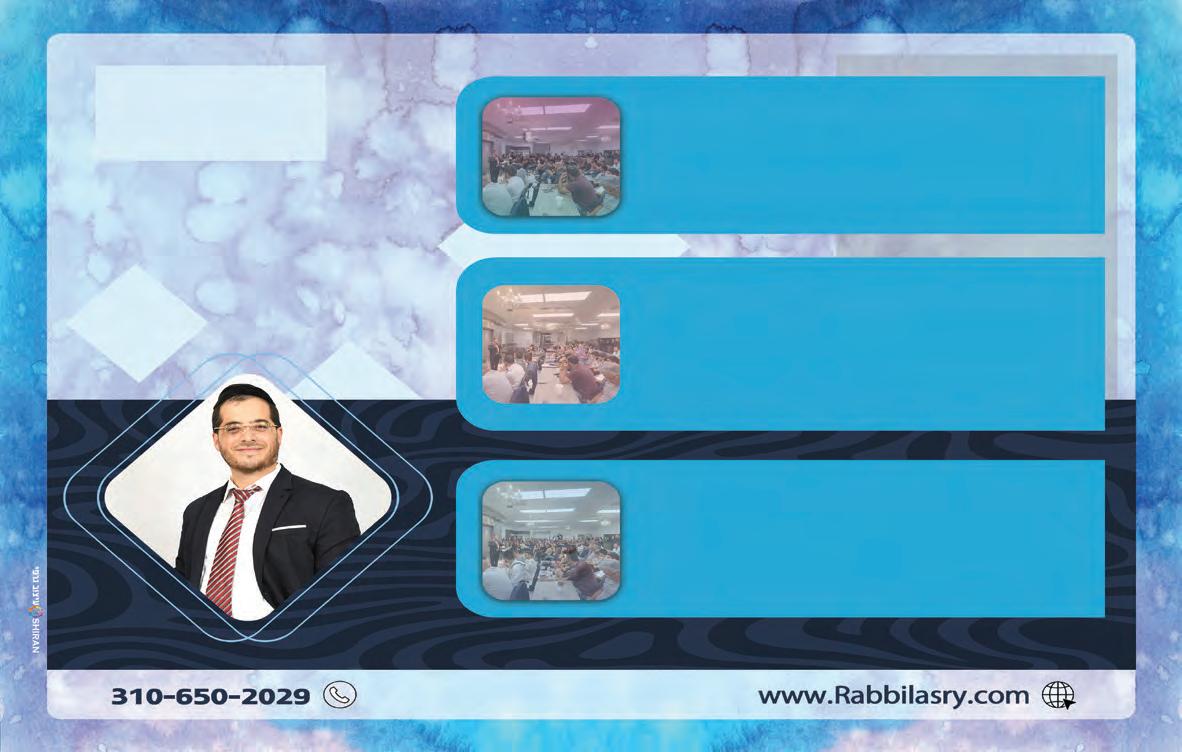


Do you want to achieve greater success and find the personal fulfillment you've always dreamed of?
The time has come to acquire the skills to create a successful life and maximize your potential.
In this course, you will receive tools to succeed—learning how to take control of your life and direct them toward success, security, and personal fulfillment.
Are you experiencing distance in your relationship?



Do you and your spouse feel distant, as if you are not truly communicating?Do you feel that despite trying, you are not getting through to one another?
You are not alone!
In this course, you will learn practical tools to bring closeness and warmth back into your marriage, to build trust and deep understanding between you and your spouse, and to strengthen your connection through love and appreciation.

Conversion Course with Professional Guidance

With presentations and instructional videos on all the topics that converts need to know: Jewish Holidays, Shabbat, Kosher Laws, Prayer, Family Purity, and more...
The course includes personal guidance. Meetings via Zoom from anywhere in the world.


By Mayor Scott Singer
Boca Raton is proving itself to be a shining beacon of athletic excellence, with our local teams and athletes bringing home national titles, helping to solidify the city’s reputation as a premier sports hub.
With March Madness on the horizon and memories of Florida Atlantic’s recent exciting Final Four run, it is exciting to recognize all the achievements our city has accomplished in the sports world.
This past year has seen victories across multiple disciplines, further showcasing the city’s dedication to fostering talent and athleticism.
In a thrilling showcase of skill and teamwork, the Boca Raton Picklers recently captured the National Pickleball League championship, marking a historic achievement for the city. The team, known for their relentless drive and sharp focus, battled through fierce competition to claim the coveted title.
This victory also highlights the growing popularity of pickleball in the area. The city recently approved the addition of several new pickleball and padel courts. One project plans turn 28,356 square feet of industrial space on Holland Drive into eight courts. Another project will bring indoor pickleball courts to North Park.
As the sport continues to expand, we will be on the lookout to watch the Picklers and other teams.

Lynn University has long been known for its academic prowess, but its athletic programs have also been making waves on the national scene. The men’s soccer team recently clinched the national championship, showcasing a blend of skill, discipline, and teamwork. The victory marked a significant moment in the program’s history, and the team’s triumph has further solidified Lynn’s reputation as a top-tier athletic institution.
Not to be outdone, the Lynn University women’s volleyball team also delivered an unforgettable performance, securing their
own national championship. Their resilience and athleticism were on full display as they outlasted their opponents in an intense final match, bringing home the title in a historic win that will be remembered for years to come.
What makes these victories even more remarkable is the support and infrastructure that Boca Raton provides to its athletes.
With exciting changes coming to our downtown government campus, the city will be looking at ways to enhance its offerings.
While there will be changes in store for where many enjoy playing tennis, softball, and skateboarding, we are looking at making upgrades to ensure our residents have access to top-notch quality recreation offerings.
Our city rallies behind its athletes from the littlest sluggers to the adult leagues. We cheer for sportsmanship and excellence and the City of Boca Raton’s commitment to recreation is clear.
As we look ahead, the future of Boca Raton’s sports scene is brighter than ever. With a combination of rising talent, dedicated athletes, and a community that supports them, it’s no wonder that the city continues to shine on and off the field.

THE PROGRAM IS THE FIRST OF ITS KIND TO LAUNCH IN THE NATION
In a groundbreaking move to address the growing concern of antisemitism in health care, the City of Miami Beach has unanimously agreed to partner with and help fund a new antidiscrimination program developed by the Center for Combating Antisemitism (CCA). Mount Sinai Medical Center will pilot this initiative, which is the first of its kind in the United States. The program aims to support health care professionals at the medical center in diagnosing and addressing the re-emerging virus of antisemitism in medicine.
This innovative program is expected to serve as a model for other medical institutions across the country, as health care organizations recognize the need for comprehensive education on antisemitism, which has been historically neglected in medical training. The program will focus on equipping staff, from medical practitioners to hospital administrators, with the tools to recognize antisemitism, confront it effectively, and maintain the high standard of care and ethics expected in the medical field.
The announcement follows a Miami Beach City Commission meeting where Commissioner David Suarez presented disturbing video clips of nurses, both in the U.S. and abroad, expressing violent antisemitic sentiments, including claims of harming Jewish patients. While these cases are extreme, they highlight a dangerous and troubling trend where health care professionals, medical asso-
ciations, and medical schools are encountering disturbing incidents of antisemitism, both online and in the workplace.
“As we continue to reflect on our own powerful history during our 75th anniversary, we keep in mind our founders’ vision for Mount Sinai, who sought to establish a haven where Jewish and African American physicians and patients could practice medicine and receive care freely. Their ambition lives on through us today,” says Gino R. Santorio, President and CEO of Mount Sinai Medical Center. “This newly formed partnership further solidifies our commitment to combating antisemitism, racism, and other forms of hate that unfortunately persist in our society and is vital to the progress of our community and nation.”
“Prejudice against any group — whether racial, religious, or national — runs directly contrary to the accepted ethical standards of medicine,” says Commissioner Suarez. “The rise of antisemitism within medical environments poses a direct threat to patient trust, the morale of practitioners, and the field of medicine as a whole.”
Since the horrific Hamas massacre of Israelis on Oct. 7, 2023, the problem of antisemitism in medicine has rapidly transformed into a public health crisis. This rise in hatred demands immediate action to ensure that health care settings remain free from bias and prejudice, particularly against Jewish patients and professionals.
“This pilot program at Mount Sinai will set a new precedent for how medical institutions can address this critical issue. Training on cultural sensitivity, bias, and discrimination is vital to good medical practice,” says Dr. Sheri Ross, Director of Medical Outreach for the Center for Combating Antisemitism. “A recent study by the StandWithUs Department of Data & Analytics found that 40% of health care professionals experience antisemitism in their professional setting. While the vast majority of health care institutions mandate antidiscrimination training, less than 2% of their diversity training programs cover antisemitism. This pilot program at Mount Sinai Medical Center will set a new precedent for how medical institutions can address this critical issue.”
This effort marks a significant step in ensuring that all patients — regardless of their background — receive the unbiased, high-quality care they deserve, free from any form of discrimination. CCA and Mount Sinai Medical Center are grateful to Joseph Sabag and NJAC for assistance.
For more information or media inquiries, please contact:
City of Miami Beach Communications
Phone: 305-555-1234
Email: media@miamibeach.gov
Center for Combating Antisemitism
Phone: 224-392-3264
Email: info@ccc-training.org
Mount Sinai Medical Center
Phone: 305-674-2589
Email: jackie.kaplan@msmc.com































VOTE
HAKODESH. VOTE ERETZ HAKODESH. VOTE ERETZ HAKODESH. VOTE ERETZ
VOTE ERETZ HAKODESH. VOTE ERETZ HAKODESH. VOTE ERETZ HAKODESH.
HAKODESH. VOTE ERETZ HAKODESH. VOTE ERETZ HAKODESH. VOTE ERETZ
Eretz HaKodesh is a movement created to protect kedushas Eretz Yisroel. They established a party in the World Zionist Congress (WZC), a board of Jewish representatives from around the world that wields serious influence and controls substantial funds that shape life in Eretz Yisroel and throughout the Jewish World.
VOTE ERETZ HAKODESH. VOTE ERETZ HAKODESH. VOTE ERETZ HAKODESH.

Every five years, an election determines who represents American Jewry in this congress. In the last election cycle, Eretz HaKodesh received 20,000 votes from people like you. This election cycle, they aim for 100,000 votes because the stakes are higher. The opposition—woke left and liberal Jews—are working harder than ever to bring more of their representatives and change the face of Eretz Yisroel.
HAKODESH. VOTE ERETZ HAKODESH. VOTE ERETZ HAKODESH. VOTE ERETZ
VOTE ERETZ HAKODESH. VOTE ERETZ HAKODESH. VOTE ERETZ HAKODESH. HAKODESH. VOTE ERETZ HAKODESH. VOTE ERETZ HAKODESH. VOTE ERETZ
VOTE ERETZ HAKODESH. VOTE ERETZ HAKODESH. VOTE ERETZ HAKODESH. HAKODESH. VOTE ERETZ HAKODESH. VOTE ERETZ HAKODESH. VOTE ERETZ
VOTE ERETZ HAKODESH. VOTE ERETZ HAKODESH. VOTE ERETZ HAKODESH.
HAKODESH. VOTE ERETZ HAKODESH. VOTE ERETZ HAKODESH. VOTE ERETZ
VOTE ERETZ BECAUSE THERE IS VOTE ERETZ HAKODESH. VOTE ERETZ HAKODESH.
VOTE ERETZ HAKODESH. VOTE ERETZ HAKODESH. VOTE ERETZ HAKODESH.
HAKODESH. VOTE ERETZ HAKODESH. VOTE ERETZ HAKODESH. VOTE ERETZ
VOTE ERETZ HAKODESH. VOTE ERETZ HAKODESH. VOTE
HAKODESH. VOTE ERETZ HAKODESH. VOTE ERETZ HAKODESH. VOTE ERETZ
VOTE ERETZ HAKODESH. VOTE ERETZ HAKODESH. VOTE ERETZ HAKODESH.
HAKODESH. VOTE ERETZ HAKODESH. VOTE ERETZ HAKODESH. VOTE ERETZ
VOTE ERETZ HAKODESH. VOTE ERETZ HAKODESH. VOTE ERETZ HAKODESH.
HAKODESH. VOTE ERETZ HAKODESH. VOTE ERETZ HAKODESH. VOTE ERETZ
VOTE ERETZ HAKODESH. VOTE ERETZ HAKODESH. VOTE ERETZ HAKODESH.
HAKODESH. VOTE ERETZ HAKODESH. VOTE ERETZ HAKODESH. VOTE ERETZ
VOTE ERETZ HAKODESH. VOTE ERETZ HAKODESH. VOTE ERETZ HAKODESH. HAKODESH. VOTE ERETZ HAKODESH. VOTE ERETZ HAKODESH. VOTE ERETZ
VOTE ERETZ HAKODESH. VOTE ERETZ HAKODESH. VOTE ERETZ HAKODESH. HAKODESH. VOTE ERETZ HAKODESH. VOTE ERETZ HAKODESH. VOTE ERETZ
VOTE ERETZ HAKODESH. VOTE ERETZ HAKODESH. VOTE ERETZ HAKODESH.
HAKODESH. VOTE ERETZ HAKODESH. VOTE ERETZ HAKODESH. VOTE ERETZ
VOTE ERETZ HAKODESH. VOTE ERETZ HAKODESH. VOTE ERETZ HAKODESH. HAKODESH. VOTE ERETZ HAKODESH. VOTE ERETZ HAKODESH. VOTE ERETZ
VOTE ERETZ HAKODESH. VOTE ERETZ HAKODESH. VOTE ERETZ HAKODESH.
HAKODESH. VOTE ERETZ HAKODESH. VOTE ERETZ HAKODESH. VOTE ERETZ
VOTE ERETZ HAKODESH. VOTE ERETZ HAKODESH. VOTE ERETZ HAKODESH. HAKODESH. VOTE ERETZ HAKODESH. VOTE ERETZ HAKODESH. VOTE ERETZ
VOTE ERETZ HAKODESH. VOTE ERETZ HAKODESH. VOTE ERETZ HAKODESH. HAKODESH. VOTE ERETZ HAKODESH. VOTE ERETZ HAKODESH. VOTE ERETZ
VOTE ERETZ HAKODESH. VOTE ERETZ HAKODESH. VOTE ERETZ HAKODESH. HAKODESH. VOTE ERETZ HAKODESH. VOTE ERETZ HAKODESH. VOTE ERETZ
VOTE ERETZ HAKODESH. VOTE ERETZ HAKODESH. VOTE ERETZ HAKODESH. HAKODESH. VOTE ERETZ HAKODESH. VOTE ERETZ HAKODESH. VOTE ERETZ

ERETZ HAKODESH. VOTE ERETZ HAKODESH.
HAKODESH. VOTE ERETZ HAKODESH. VOTE ERETZ
ERETZ HAKODESH. VOTE ERETZ HAKODESH.
HAKODESH. VOTE ERETZ HAKODESH. VOTE ERETZ
ERETZ HAKODESH. VOTE ERETZ HAKODESH.
HAKODESH. VOTE ERETZ HAKODESH. VOTE ERETZ
ERETZ HAKODESH. VOTE ERETZ HAKODESH.
HAKODESH. VOTE ERETZ HAKODESH. VOTE ERETZ
ERETZ HAKODESH. VOTE ERETZ HAKODESH.
HAKODESH. VOTE ERETZ HAKODESH. VOTE ERETZ
ERETZ HAKODESH. VOTE ERETZ HAKODESH. HAKODESH. VOTE ERETZ HAKODESH.
HAKODESH. VOTE ERETZ HAKODESH. VOTE ERETZ
ERETZ HAKODESH. VOTE ERETZ HAKODESH.
VOTE ERETZ HAKODESH. VOTE ERETZ
ERETZ HAKODESH. VOTE ERETZ HAKODESH.

HAKODESH. VOTE ERETZ HAKODESH. VOTE ERETZ
ERETZ HAKODESH. VOTE ERETZ HAKODESH.
The Kosel. Our Yeshivas. Our way of life. Everything we hold sacred is under attack.
HAKODESH. VOTE ERETZ HAKODESH. VOTE ERETZ
Through these efforts, they have brought millions of dollars in funding to our mosdos, including yeshivas, Bais Yaakovs, and seminaries in Eretz Yisroel.
ERETZ HAKODESH. VOTE ERETZ HAKODESH.
HAKODESH. VOTE ERETZ HAKODESH. VOTE ERETZ
The WOKE LIBERAL LEFT has one goal: To eliminate Torah Judaism from Eretz Yisroel.
ERETZ HAKODESH. VOTE ERETZ HAKODESH.
This isn't politics. This is survival.
Eretz HaKodesh has also taken the lead in fighting legal battles brought by the woke and liberal movement against kedusha in Eretz Yisroel and our Torah lifestyle.
HAKODESH. VOTE ERETZ HAKODESH. VOTE ERETZ
Eretz HaKodesh has been fighting for kedushas ha'aretz for the past 5 years.
ERETZ HAKODESH. VOTE ERETZ HAKODESH.
You have a say in what happens in Eretz Yisroel by electing Eretz HaKodesh to represent us.
HAKODESH. VOTE ERETZ HAKODESH. VOTE ERETZ
ERETZ HAKODESH. VOTE ERETZ HAKODESH.
HAKODESH. VOTE ERETZ HAKODESH. VOTE ERETZ
With just a $5 voting fee and a click, Eretz HaKodesh can continue its role of keeping Eretz Yisroel holy.
ERETZ HAKODESH. VOTE ERETZ HAKODESH.
HAKODESH. VOTE ERETZ HAKODESH. VOTE ERETZ
ERETZ HAKODESH. VOTE ERETZ HAKODESH.
HAKODESH. VOTE ERETZ HAKODESH. VOTE ERETZ
ERETZ HAKODESH. VOTE ERETZ HAKODESH.
HAKODESH. VOTE ERETZ HAKODESH. VOTE ERETZ
ERETZ HAKODESH. VOTE ERETZ HAKODESH.
HAKODESH. VOTE ERETZ HAKODESH. VOTE ERETZ
ERETZ HAKODESH. VOTE ERETZ HAKODESH.
HAKODESH. VOTE ERETZ HAKODESH. VOTE ERETZ
ERETZ HAKODESH. VOTE ERETZ HAKODESH.

VOTE ERETZ HAKODESH. VOTE ERETZ
Jews and outer space aren’t two things that generally go together. Though there have been a handful of Jewish astronauts, two of whom were tragically killed on missions, we seem to focus more on “inner space,” that of exploring ourselves and who we can become.
However, the space I’m thinking off is neither inner nor outer. I’m talking about space in terms of how much room people have to move around. It’s an idea I had while traveling on an airplane, en route from Eretz Yisrael back to America.
Travel has changed dramatically over the years. Historically, getting from one place to another was a time-consuming affair. Whether you were traveling by donkey or camel, or maybe riding on a wagon pulled by an animal, you didn’t get far in a day. Even journeys by ship could take weeks or months, though steamships managed to lower the travel time involved. Fast-forward to today, and you can travel in hours what had previously taken many times longer. You get to your destination so much faster, that it’s got to be better, right? Well, certainly, so, but there are some drawbacks.
Imagine you had to spend twelve hours traveling on a wagon. You might have a plush interior, room to get up and move around, and if you wanted, you could stop and stretch your legs. Traveling by ship limited your ability to stop and stroll a bit, but you definitely had a chance to walk around the deck, maybe catch some sun by the rail overlooking the sea, and move from room to room on the boat. Trains had sleeper cars, dining cars, and game cars, plus special observation cars.
Sure, you were in traveling mode for those hours, but you weren’t really locked into your space - unlike
By Rabbi Jonathan Gewirtz
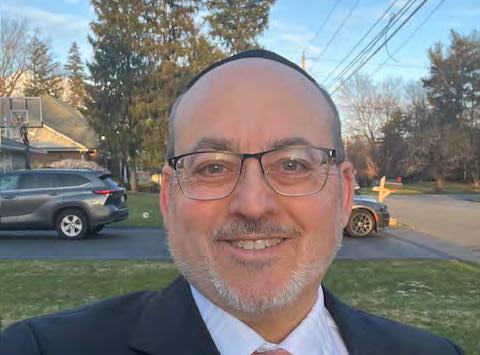
air travel, where we are forced to remain in our seats, in a small area, for most of the flight. Even if you get up to wash your hands, or maybe get a drink from the galley, you’re headed right back to that small seat. How about davening? The way some people crowd and cram the galleys of the airplane to pray is enough to give claustrophobia to a tiny flea. That’s no way to daven!
Now, think back to those astronauts. In the early days of space travel, they were nearly bolted into their seats and couldn’t even get up if they wanted to. It’s gotten better with the introduction of space shuttles and space stations, but the quarters are still pretty tight.
As I sat there in my seat, jockeying for armrest space and wishing the person behind me wouldn’t yank on my seatback as a means for getting up, (and yes, I had asked them ahead of time to be careful, nevertheless they woke me with a start several times,) I had a thought:
The faster we travel, the less room, and potentially comfort, we have to do it. In Victorian times, one of the heydays of leisure travel, people took dozens of trunks of clothing and belongings, and reveled in the posh staterooms and train cars, staying in the finest hotels along the way. Now? They shove you in a sardine can for half a day, but at least at the end, you’re in The Promised Land.
I know I’ve taken you on quite a journey, but do you see where I’m heading? It occurred to me that we willingly exchange our freedom for the ability to go farther. We can’t stop and smell the roses, or get up and take a leisurely stroll anymore. We are limited in what we can and can’t do, by the FAA, airlines, and other governing bodies. And yet, we agree to this. Why? Because we’re getting somewhere we really want to be! We understand that being free is nice, but making progress is more important to us.
By now, I’m sure you know what I’m getting at. Nobody likes to be told what to do. Nobody likes being tied down or having their freedom of movement limited. The Torah and Mitzvos can seem like they’re holding us back, not letting us do what we want.
Well guess what? That’s absolutely true. There are things the Torah will stop you from doing. There are places you can’t go and you will have a number of other limitations. BUT – like taking an airplane for a spaceship, you will go higher and farther because you followed the rules. You’re strapping yourself in for the ride of your life, and you don’t want to waste time just to be a little more comfortable. You know you’re living your life with a destination in mind, and it’s worth a little discomfort along the way.
But more than that, the rules of the Torah are protecting you from injury and danger on the road, too. How we think, speak, and act, are all influenced by Hashem’s Five-Star travel guide, ensuring we have a quality trip wherever we go, and at the place of our final destination.
© 2025 – All Rights Reserved
Did you enjoy this column? Feedback is welcome and appreciated. E-mail info@JewishSpeechWriter.com to share your thoughts. You never know when you may be the lamp that enlightens someone else.

By: Dovid Gold
Over the past decade or so, a wave of lawsuits targeting the lifestyle of the religious communities in Eretz Yisroel has been brought before the powerful and left-leaning Israeli Supreme Court. While not all of these cases have succeeded, they’ve complicated life for hundreds of thousands of religious people. Moreover, these petitions have deepened the divisions among Israeli society. But who is spending time and money to bring these cases? And why do they care how the frum community chooses to live?
A close look into each of these cases reveals a fascinating pattern. The fingerprints of the Jewish American woke left, organized into the Reform movement, are present each time. Desperate for relevance, Reform leaders in America have merged their anti-Torah ideology with the woke left agenda, launching a systematic campaign against the Torah communities of Eretz Yisroel. In doing so, they have created a cause célèbre to rally their dwindling membership.
While the Israeli court system leans strongly to the left and is widely viewed as unkind to religion, by law, courts do not initiate actions against Israeli citizens. Courts intervene only when a petition is filed before them. Successfully bringing
a case before the Supreme Court requires expert legal representation and significant financial resources. Litigation typically starts at around 20,000 shekels, and many cases drag on for years, racking up large legal fees. Without the backing of a well-funded institution, these petitions or lawsuits hardly stand a chance of gaining any traction. For these reasons, the status quo understanding between the state and the religious communities in Israel has mostly held. Only in more recent years have so many rulings been handed down by the courts targeting religious practices.
This new reality is due to the emergence of a new force on the Israeli scene: The Reform Center for Religion and State. This legal arm of the Reform movement in Israel has taken the lead in each of these petitions and the lawyers they retain have fought these battles.
The Reform Center was established approximately 35 years ago. Officially, it was founded to advocate for the rights of Reform communities and promote the recognition of pluralistic and Reform values. However, in practice, the Center has led campaigns against virtually every area in which the Torah communities of Israel operate.
Since the advent of cell phones, the Charedi public in Eretz Yisroel has embraced the use of kosher-filtered cell phones, which safeguard the purity and wholesomeness of their chosen way of life. But in 2016, a lawsuit claimed these phones don’t allow access to hotlines for people with alternative lifestyles. This sparked a years-long legal saga to protect what the Charedi community views as a basic right. While this case continues to work through the legal system, the courts have already ordered the Knesset to pass laws that satisfy these pluralistic goals.
A review of the official court documents shows that the petition was jointly brought by organizations advocating for those who practice alternative lifestyles along with the Reform Center and the Movement for Progressive Judaism, another Reform arm. And that all the petitioners were represented by lawyers who are members of the Center’s legal staff. It is obvious that the Reform movement has no direct stake in the type of cell phones used by the frum community, nevertheless, they exploited this issue to advance their broader agenda of gaining relevance by generating coverage in Israel’s media outlets sympathetic to their cause.

Thousands of working parents in Eretz Yisroel rely on government-subsidized childcare during work hours. For decades, based on the understanding that an avreich has the legal status of a “studying spouse,” families where the husband learns in kollel and the wife works have also benefited from these subsidies. To strip kollel families of this badly needed assistance, a petition was filed arguing that full-time Torah study does not meet legitimate standards of “studying”.
Court documents again reveal that the Reform Center for Religion and State led this petition, along with five other leftist organizations, and that the Center’s legal team represented all petitioners. Ultimately, this baseless petition was dismissed because the subsidies are intended to encourage female participation in the workforce, regardless of their spouse’s employment status.
It’s hard to believe the petitioners truly opposed subsidies for working women, a cause they often champion. Instead, it appears that it was all about delegitimizing the kollel system by painting them as unfairly benefiting from government funds.
Another staple of organized life in Eretz Yisroel targeted by legal petition is the Mehadrin bus lines, which maintain separation between men and women per the community’s societal norms. In yet another case arguing that this longstanding practice violates laws of equality, the Reform Center and its lawyers are listed as petitioners. This time, the courts ruled in favor of the petitioners,
forcing an end to Mehadrin seating arrangements. The result? A massive disruption for thousands of frum commuters, whose cultural norms were ironically disregarded under the guise of “equality.”
Also targeted by the Reform Center and its lawyers is the curriculum being taught in the vast network of chadorim serving the Torah communities. Since Tanach is part of the core curriculum taught in every school in Israel, a case has been brought to block the legitimacy of chadorim who refuse to teach Tanach in the politically correct manner acceptable to the woke left in Israel. While this is an obvious non-starter for frum schools, this litigation resulted in a disparity in funding for the religious sector in Israel and became yet another talking point with which to disparage communities committed to following authentic Jewish traditions.
Besides these high-profile cases, many other petitions were brought in at all levels of the Israeli court system but were thwarted along the legal maze. Nevertheless, the mere threat of judicial intervention is enough to make the politicians sympathetic to traditional Jewish values think twice before crafting any new legislation. This dynamic is true at every level of government, from the Knesset, where laws are passed that apply to every citizen of the country, to local municipalities, which are responsible for scores of regulations that affect everyday life. Moreover, these petitions
worsen the longstanding tension between the government and the courts. This rift recently boiled over in the well-known judicial reform drama that caused upheaval across Israel.
Media coverage of these lawsuits confuses the question of who truly represents Judaism. Since the founding of the State, only Orthodox Judaism has been recognized as authentic Judaism. This aligns with the perspective of the overwhelming majority of Israelis who identify with religious traditions. In fact, until a relatively short time ago, there was no official Reform presence in Israel.
However, the Reform movement has recently fought to change this perception and be recognized as representatives of the Jewish faith. A notable example of this push is evident from yet another petition filed by both the Reform and Conservative movements against the popular religious media outlet, Channel 14. The petitioners argued that Reform and Conservative clergypeople should be given equal time to present their views whenever a religion-related issue is discussed on air.
As a result, Reform has made significant inroads in establishing itself in many parts of Israel’s national character. Given that the non-orthodox streams of Judaism have become largely irrelevant in the United States, establishing a foothold in Israel has become a priority for them. This affects every aspect of religious life in Israel, including marriage and conversion, and even the management of holy sites such as the Kosel. These changes threaten to
























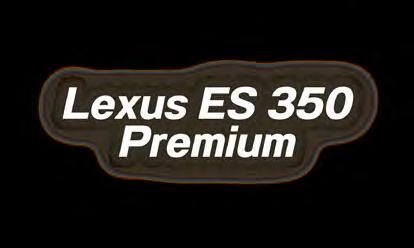






reshape the very identity of the Jewish people as these pluralistic versions of Judaism gain legal and cultural influence.
The Reform movement’s decades-long involvement in the World Zionist Congress directly funds these legal petitions. Through its advocacy efforts in the Congress, the Reform movement has successfully managed to advocate for the direct funding of diverse streams of Judaism. Tens of millions of Shekels are allocated each year to fund the growth of the Reform movement in Israel, with official Reform organizations in Israel proudly listing the Na-
tional Institutions as sponsors on their respective websites.
A noteworthy portion of this money is funneled to the Reform Center for Religion and State under the guise of furthering Reform interests. However, as demonstrated by its legal history, the Center is largely used to fight legal battles against established religious communities and to arouse animosity toward the religious sector.
In the 2020 Congress elections, the Reform and Conservative parties collectively received approximately 45,000 votes out of the 120,000 votes cast by American Jews. The Reform movement has intensified its efforts to gain even more votes in the upcoming elec-
tions in March 2025. To counter their influence, American Jews who support traditional Torah values must participate in these elections and vote for delegates who will oppose the Reform movement’s attempts to reshape Israeli society.
The outcome of these elections will determine who controls billions of dollars and who shapes the future of religious life in Israel. By voting for delegates with true Torah values, American Jews can help ensure that Eretz Yisroel remains a place where authentic Judaism thrives.
Please make sure to VOTE at eretzhakodesh.org beginning MARCH 10TH.


Motti: Ari, thank you for taking the time to speak with us. Let’s start with a bit about your background and what led you to create LifeShare.
Ari Rosenstein: Thank you for having me. I’ve been in business for over 30 years, primarily in sales and marketing for different companies in America. The idea for LifeShare arose after my partner and I saw an ongoing problem in the community—constant fundraising campaigns whenever someone passed away unexpectedly. We kept asking ourselves: Why don’t people have life insurance? Why do so many families lack financial security? Is it a matter of irresponsibility or something deeper?
Despite years of initiatives promoting life insurance, there remains a large gap of people who simply don’t have it. Studies and surveys have tried to understand why. People buy health insurance, car insurance, home insurance— why not life insurance in the same numbers? Initially, we thought it was just procrastination or a lack of responsibility. While there are small communities that don’t believe in life insurance, that’s not the general case. Halachically, there are teshuvos from Rav Moshe Feinstein and many other rabbis encouraging it.
Motti: So if people aren’t against it, what’s stopping them?
Ari: The reality is that many families want to be covered but face obstacles obtaining life in-
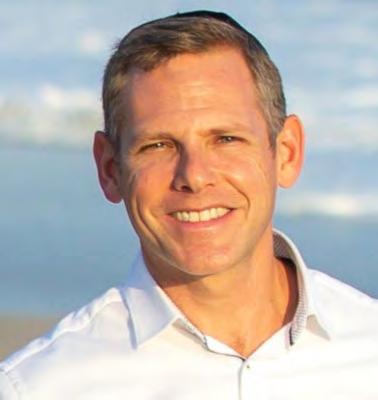
surance. Sometimes, minor health conditions—things like high blood pressure, cholesterol, diabetes, allergies, even sleep apnea—cause complications with underwriting. It gets dragged out, becomes a hassle, and in some cases, people give up. If they do get approved, the premiums can be very high. Then they start calculating—how much is this costing, what are the actual chances of me passing away young, and ultimately, life insurance drops on the priority list.
Then there’s another issue: Many people do have life insurance, but term policies expire. If you get a 20- or 30-year policy in your twenties, by the time you’re in your fifties, it’s gone. Now, when people really need it—with a mortgage, tuition, and high expenses— they’re left with nothing or facing expensive renewal costs.
Motti: That makes sense. So how does LifeShare solve this problem?
Ari: LifeShare is based on a very old concept—mutual aid.
The Gemara talks about it: communities pooling funds to support each other, whether for weddings or other needs. Early Jewish societies did this informally, but in today’s world, we can structure it with modern technology and scale it globally.
With LifeShare, people opt in to a cost-sharing program, so that if a member passes away, the entire group is charged a small amount, pooling the money to provide a financial safety net for the bereaved family. There’s no need for a medical exam, no complicated underwriting. It’s an alternative solution for those who can’t or don’t want to go through traditional insurance.
Motti: So how does it work, exactly?
Ari: It’s incredibly quick and simple. Members join LifeShare online in just a few minutes. There is a brief health questionnaire, and a $40 annual membership fee. There are no monthly premiums or fixed commitments. The only financial obligation is to make a one-time, tax-deductible contribution of $32, ONLY if a LifeShare member passes away. This money is automatically charged to members’ pre-authorized credit cards, and the funds are distributed to the beneficiaries with one week of verification.
Motti: Does the community have a specific geographical focus?
Ari: No, it’s global. We already have members from Boca, Miami,



New York, LA, and Ramat Beit Shemesh. Eventually, we envision more localized groups—Southern Florida having its own, California having its own, Chabad communities forming their own, etc.
Motti: What happens in extreme cases, like multiple tragedies in one month?
Ari: LifeShare follows actuarial mortality tables, which predict about one death per thousand members annually. To ensure stability, we cap community charges at a maximum of twelve times per year. That gives us a built-in buffer. However, in mass casualty events like October 7th or Meron, there’s a force majeure clause—our model isn’t designed to handle large-scale disasters.
Motti: You mentioned that this is different from insurance in other ways. Can you elaborate?
Ari: Yes. Traditional life insurance pays out after months of bureaucratic processing. With Life-
Share, once a death certificate is verified, we can process payments within a week. This is critical because families often face frozen bank accounts and immediate financial needs.
Additionally, insurance policies often lapse. 99% of policies never pay out because the policyholder either outlives it or stops paying, and those years of premiums are lost. With LifeShare, you are covered until age 65, and only contribute when there’s an actual need. Every contribution is tax-deductible as tzedaka. We have a psak from both Rav Hershel Schachter and Rav Asher Weiss confirming that LifeShare payments count as maaser.
Motti: That’s a major benefit. What about corporate or institutional involvement?
Ari: Yes, some companies and kollels have started sponsoring their staff. One donor, for example, covered ten avreichim in a Boca Kollel. Instead of donating a lump
sum to one family in need, his contribution is protecting ten families with potential payouts of $2.5 million collectively.
Motti: What’s your message to the community?
Ari: We want the community to know that an alternative to traditional life insurance exists, and through the power of the community, families can access financial protection that may have otherwise been out of reach. And if you do have insurance, LifeShare provides a supplemental safeguard, while supporting others. This is an opportunity to be proactive rather than reactive. Let’s be prepared before tragedy strikes, not after.
Motti: Thank you, Ari. This initiative has the potential to be a real game-changer.
Ari: Thank you. We appreciate the opportunity to spread the word and encourage the community to take action. You can learn more at www.joinlifeshare.com.





your submission to
Deadline: March 18th at 3pm
3rd Place Place: mystery prize
1st Place Prize: mystery prize 2nd Place Prize: mystery prize





















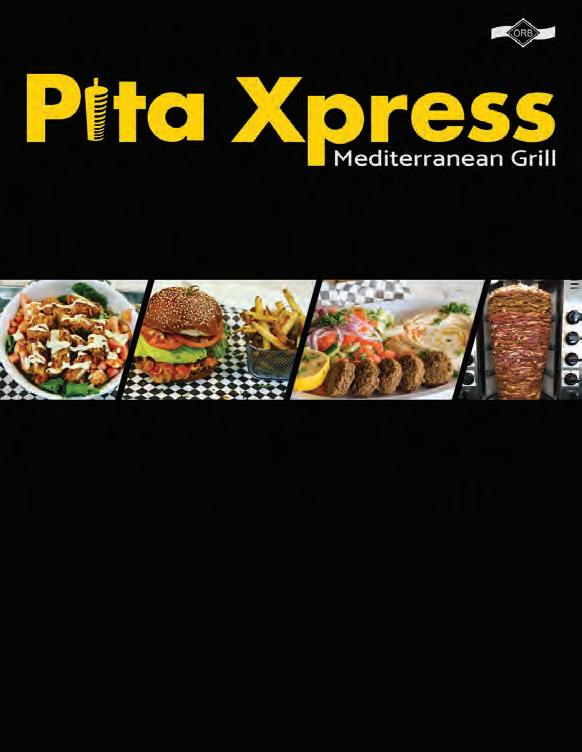












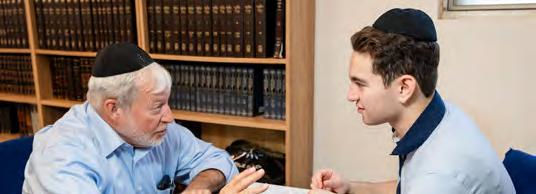

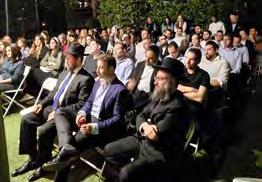









By Dr. Sarah Rosanel, MD FACC, Concierge Physician in Miami Florida - Internal Medicine Specialist/ Family Medicine and Cardiologist

Rachel, a 34-year-old marketing professional and mother of three, never had a history of mental health issues. But after recovering from COVID-19, she found herself overwhelmed with anxiety, struggling to concentrate, and constantly exhausted. Once a social, energetic person, she now avoided gatherings and felt a deep sense of sadness she couldn’t shake. When she finally saw her doctor, she was diagnosed with post-COVID depression and anxiety—something she never expected from a respiratory illness.
Rachel is not alone. Millions of people worldwide are experiencing similar struggles, highlighting the post-COVID mental health crisis that continues to affect individuals long after the physical symptoms have faded.
Understanding Post-COVID Mental Health Issues
COVID-19 has left a lasting impact on mental health, increasing cases of:
• Anxiety disorders (generalized anxiety, panic attacks, social anxiety)
• Depression (persistent sadness, hopelessness, fatigue)
• Cognitive impairment (“brain fog”) (trouble focusing, memory issues)
• Post-Traumatic Stress Disorder (PTSD) (especially in those hospitalized)
• Sleep disturbances (insomnia, nightmares)
Factors contributing to these issues include:
• The body’s inflammatory response to the virus
• Long COVID symptoms affecting daily life
Diagnosing Post-COVID Mental Health Disorders
Many people don’t realize that their emotional struggles are linked to COVID-19. Healthcare providers should screen for:
• Persistent mood changes lasting more than two weeks
• Excessive worry, panic, or irritability
• Cognitive issues affecting work or daily life
• Changes in sleep or appetite
• Social withdrawal or lack of interest in activities
What Can Be Done?
If you or someone you know is struggling, here are steps to take:
1. SEEK PROFESSIONAL HELP:
• Primary care doctors can help diagnose and guide treatment.
• Therapy (CBT, mindfulness-based therapy) can help reframe negative thoughts.
2. PRIORITIZE LIFESTYLE ADJUSTMENTS:
• Regular exercise improves mood and brain function.
• A healthy diet rich in omega-3s and antioxidants supports brain health.
• Good sleep hygiene is crucial for emotional well-being.
3. SOCIAL & EMOTIONAL SUPPORT:
• Talking to friends, family, or support groups can reduce feelings of isolation.
• Practicing gratitude and mindfulness can help rewire the brain toward positivity.
CONCLUSION: The mental health impact of COVID-19 is real, and it’s time we take it seriously. By recognizing the signs and seeking support, individuals like Rachel can regain their sense of well-being.
Dr. Sarah Rosanel is a dedicated concierge physician based in Miami, FL, specializing in personalized healthcare tailored to the unique needs of her patients. With a holistic approach that blends traditional medicine, lifestyle interventions, and functional medicine, she empowers individuals to achieve optimal health and well-being.
As an expert in Concierge Medicine & Cardiology, Dr. Rosanel integrates cutting-edge medical treatments with holistic methodologies, ensuring comprehensive care that goes beyond symptom management to address the root causes of health concerns.
Beyond her medical practice, Dr. Rosanel is a devoted mother to Ariel, Zev, and Shirley, balancing her passion for healing with the joys of family life.
• Medication (antidepressants, anti-anxiety medications) may be beneficial in severe cases.
Book your appointment today by texting or calling (646) 467 4368. Miami, Florida. info@drrosanel.com


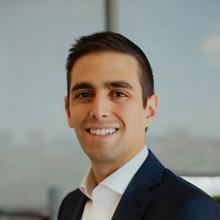











By Jamie Geller
• 135 MIN DURATION • 60 MIN COOK TIME • 15 MIN PREP TIME • 8 S E RVNG •
The fragrance of berries simmering away with a bit of sparkling wine is heavenly. The whole house smells amazing. This recipe makes a fair amount of jam which can be frozen or canned. Feel free to sub my Raspberry Rose Honey mixed with some nuts or berries for the filling.
SPARKLING BERRY JAM
• 5 ounces sparkling wine, such as Prosecco or Champagne
• 1½ pounds raspberries, frozen work well
• ½ pound strawberries, frozen work well
• 4½ cups sugar
• Pinch of sea salt
HAMANTASCHEN DOUGH
• ¼ cup sugar
• ½ cup butter
• ½ cup cream cheese
• 1 egg yolk
• 1 teaspoon vanilla extract
• 1¼ cups flour + more for rolling out dough
ASSEMBLY
• 1 whole egg
• 2 teaspoons water
• 1½ cups Sparkling Berry Jam, chilled

SPARKLING BERRY JAM:
1. Simmer sparkling wine, raspberries, strawberries, sugar, and salt over medium heat until sugar dissolves.
2. Continue simmering, stirring occasionally, for about 15 to 20 minutes, until berries are broken up and fairly mushy (in a good way). If any scum appears on the surface, use a wooden or metal spoon to skim it off.
3. Test for set-point by placing a teaspoon full of jam on a plate and placing the plate in the refrigerator for 15 minutes. If the jam has developed a skin and is holding together, take off the heat and cool. If not, continue cooking for another 10 minutes before testing for set-point again.
4. Cool completely before filling hamantaschen. Jam can be
7 TO 8 CUPS JAM AND ABOUT 12 COOKIES
stored for up to 1 week in the refrigerator or frozen for up to 2 months.
HAMANTASCHEN DOUGH:
1. Pulse sugar, butter, cream cheese, egg yolk, and vanilla In a food processor until combined.
2. Add flour and pulse until dough forms a ball.
3. Turn dough out onto counter and knead a few turns until smooth and elastic. Flatten into a disk and wrap in plastic. Chill for at least 1 hour and up to 2 days, or freeze for 1 month.
ASSEMBLY:
1. Preheat oven to 350°F. Line a baking sheet with parchment.
2. Whisk egg and water together and set aside.
3. Roll out dough on lightly floured surface. Cut into 3-inch circles.
4. Spoon a small amount of jam into center of dough. Lightly brush edges with egg wash. Form into triangle, being sure to pinch edges tightly together.
5. Place on lined baking sheet. Continue with remaining dough.
6. Bake for 30 minutes or until golden brown.









1. The Only Holiday Named After a Lottery!
The name Purim comes from the word pur, meaning lottery in Persian. Haman cast lots to decide the best day to destroy the Jewish people—but Hashem had other plans!
2. Esther’s Secret Identity
Queen Esther kept her Jewish identity a secret while living in King Achashverosh’s palace. Her real Hebrew name was Hadassah, but she used the Persian name Esther, which comes from the word “hester” (hidden)— hinting at how Hashem’s miracles in the Purim story were hidden.
3. The Megillah Never Mentions Hashem’s Name
Unlike other books in Tanach, Hashem’s name is never directly mentioned in Megillat Esther. This reminds us that even when miracles aren’t obvious, Hashem is always guiding events behind the scenes!
4. Why Do We Dress Up?
One reason for the Purim costume tradition is that the miracle of Purim was “disguised” as natural events—nothing seemed supernatural, but everything was

perfectly planned by Hashem!
5. Purim is Even Greater Than Yom Kippur!
The Zohar explains that Yom Kippur is called “Yom K’Purim”—a day like Purim! This teaches that the joy of Purim, when we recognize Hashem’s hidden miracles, is as spiritually powerful as the holiness of Yom Kippur.
6. The World’s Longest Megillah
In 2021, Israeli artist Avner Moriah set the Guinness World Record for the longest Megillat Esther. His illuminated megillah is 28.03 meters (92 feet) long, about the length of a basketball court! It took him 15 years and over one million brushstrokes to complete.
7. The World’s Largest Hamantasch
In 2006, volunteers from the Friends of the IDF, in collaboration with Angel Bakery, set a Guinness World Record by baking a hamantasch weighing 650 kg (approximately 1,433 pounds). The massive pastry included 200 kg of flour, 120 kg of margarine, 400 eggs, 40 kg of sugar, and 150 kg of ground poppy seeds.
First place: $30 gift card | Second place: $20 gift card | Third place: $10 gift card
Email your artwork to editor@tsfcommunityvoice.com Make sure to include your name, age and city. Entries must be received by March 10.
This type of contest encourages creativity, education and community engagement. It allows kids to express themselves through art, and it also provides an opportunity for their work to be showcased in the magazine.

Sponsored by: SMASH HOUSE BURGERS smashhouseburgers.com (305) 351- 9545


WEEK’S SUPPLY LIST -Markers -White Plate -Paper -Tissues -Pencil -Pipette

CONTEST
WIN A PRIZE!
Finish the weekly project, snap a pic, and email us at info@jcm.museum for a chance to win a prize. Let’s get creating!
Divrei Hayamim states that Mered married Basya. The Gemara explains that Mered was actually Kalev ben Yefuneh, but he was given this name because it derives from the Hebrew word for “rebel.” He earned this title for standing against the plan of the other Meraglim (spies). Similarly, he married Basya because she too rebelled, defying her father’s wicked decree.
Basya means “daughter of Hashem.” Hashem said to her, “Moshe was not your son, but you called him your son. You too, are not my daughter but I call you My daughter.”

Basya (also known as Batya), daughter of King Pharaoh, went to the Nile River to purify herself from her father’s idols, accompanied by several maids. She saw baby Moshe in a basket in the river and wanted to save him. Her maids protested, insisting that a king’s decree must be followed, especially as the daughter of the king. When they persisted, the angel Gavriel came and beat them to the ground, causing their deaths. At that moment, Basya’s arm miraculously extended, allowing her to reach Moshe and rescue him.
Like Basya, you have the power to stand up against wrongdoing and choose what is right, even if you are in the minority. For instance, if you find yourself among people speaking Lashon Hara, you can refuse to participate and simply walk away.
How can you choose to do what is right even if others are not?

Measure 2.5 inches down the landscape side and draw a line through the canvas for the sky. Then from the corner of the line you drew, draw a diagonal line to the bottom of the canvas corner on the longer half of the canvas.


Mix turquoise, blue and brown to create a dark blue color. Using a sponge brush, paint the larger half of the canvas, leaving the area around the diagonal line untouched. Let it dry.

Paint the river by following the diagonal direction loosely, painting little squiggles of blue turquoise and white in a wavy line down the paper.
Add some clouds by drawing circles that touch each other. -Canvas -Cup of Water -One Medium Paint Sponge -One Medium Paintbrush
6 3 8 2 5 7 4 1



Finally, add Moshe’s basket. To form the basket, draw a half-circle, then a quarter-circle on top. To create a floating effect, paint small waves around it.
-One Small Paintbrush -Paper Towels

Meanwhile, paint the top area of your canvas with a mix of white and turquoise to create the sky.

Line the river with grass by painting small lines along both sides of the river.

LIST Enjoy your painting!! -Paint: Metallic Blue, Metallic Turquoise, White, Brown, Black and Green -Ruler -Pen










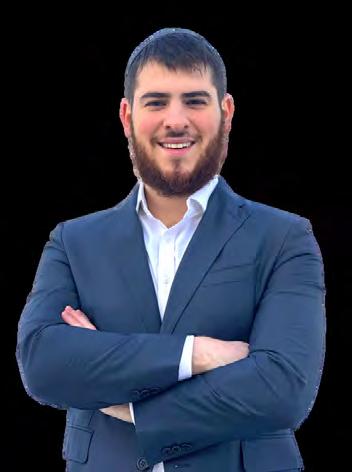








Established in 1922 during the British Mandate era, Talpiot is one of Jerusalem’s historic neighborhoods, nestled in the city’s southeastern corner. Situated just south of Baka and east of Katamon and Mekor Chaim, Talpiot borders Arnona to the west and the emerging Givat Hamatos neighborhood to the south.
The name “Talpiot” is drawn from the biblical Song of Songs (4:4), symbolizing the neighborhood’s historical connection to the Temple Mount, which is a 45-minute walk away. According to tradition, the word is a blend of Tel (hill) and Piyot (mouths), referring to the site of the former and future Temple, toward which all mouths turn in prayer.
In its early days, Talpiot stretched far beyond its current boundaries, extending east of Derech Chevron, in what is now part of Arnona. Today, the neighborhood is synonymous with the Talpiot Industrial Zone, which was established in the 1960s when Jerusalem was still a divided city. Despite its prime location, development in Talpiot lagged behind its neighbors, such as Baka and Arnona, which flourished more rapidly after Jerusalem’s reunification in 1967.
Like many industrial areas worldwide, Talpiot witnessed a decline as factories moved either abroad or to less densely populated parts of Israel. However, the past few decades have witnessed its gradual transformation from an industrial hub into a key destination for shopping, culture, and entertainment. One of the neighborhood’s more striking examples of repurposing is the

Hadar Biscuit Factory, which has been transformed into the bustling Hadar Mall. Despite its strong commercial identity, the edges of Talpiot have long housed residential buildings, many dating back over 50 years.
Now, Talpiot is on the brink of an even more dramatic evolution. The city has approved an ambitious new master plan that will reshape the Talpiot Industrial Zone into a vibrant urban center, blending residential, office, retail, entertainment and cultural spaces. A crucial part of this transformation will be the expansion of Jerusalem’s light rail system, with three new lines planned for Talpiot, alongside improved roadways for better connectivity both within the city and to other parts of Israel.
Construction is already underway, with new commercial and residential projects taking shape. However, a surge of activity is expected to begin shortly, fast-tracking Talpiot’s makeover. Over the next five years, the master plan will transform this once-sleepy industrial zone into a 21st century
urban hub, which will address the city’s growing demands for modern housing and office space.
Talpiot’s revival also aligns with what we call the “sandwich effect,” a pattern we’ve observed over the past dozen years in other successful developments. Neighborhoods like Baka, Arnona, and Mekor Chaim, which surround Talpiot, have experienced significant growth, and their vibrancy is now spilling over into Talpiot. This combination of prime location, growing infrastructure, and new projects makes Talpiot a neighborhood on the rise.
For years, Talpiot’s upside has been clear, and the neighborhood is finally on the verge of realizing that potential. With its central location, growing retail and entertainment options, and close proximity to Jerusalem’s most desirable communities, Talpiot is poised to become one of the capital’s most dynamic areas.
Gedaliah Borvick will be in Florida the week of March 23rd for private meetings and public presentations. Contact him at gborvick@ gmail.com for details.

SUNDAY, MARCH 23, 2025
Program will begin at 7:30 pm *
Young Israel of HollywoodFt. Lauderdale, 3291 Stirling Road
MONDAY, MARCH 24, 2025
We will run two programs: 6:00 pm and 7:30 pm *
Boca Raton Synagogue7900 Montoya Circle N.
TUESDAY, MARCH 25, 2025
PRESENTED BY: * RSVP optional

Program will begin at 7:30 pm * The Shul - 8540 Collins Ave, Surfside My Israel Home professionals:




By Yitzchak Steinberg

For whoever is considering property investment in Israel – whether motivated by Zionism, potential Aliyah, or investment diversification – understanding the optimal ownership structure is crucial. While in the United States, purchasing property through a corporation or LLC is common practice, in Israel, individual ownership typically provides significant advantages.
The Israeli tax system strongly favors individual property owners. When purchasing as an individual, you may benefit from reduced purchase tax rates, particularly for firsttime buyers or new immigrants. Additionally, when selling a residential property as an individual, you might qualify for significant capital gains tax exemptions that aren’t available to corporate entities.
Israel’s inheritance laws provide a straightforward path for transferring individually-owned property to heirs. Corporate ownership can complicate this process, potentially triggering additional tax events and requiring complex corporate restructuring during estate planning.
Corporate ownership in Israel comes with annual filing requirements and potential corporate taxes that individual owners avoid entirely. The cumulative savings from these reduced administrative burdens can
be substantial over the lifetime of your investment.
A critical advantage for individual purchasers is access to significantly lower mortgage interest rates compared to corporate entities. Israeli banks offer more favorable terms to individual buyers, with interest rates that can be substantially lower than those available to companies. This difference alone can save tens of thousands of dollars over the life of a mortgage, dramatically improving the overall return on your investment.
Beyond just better interest rates, Israeli banks typically offer more favorable mortgage terms to individual buyers in all aspects. Down payment requirements, approval processes, and loan-to-value ratios are generally more accessible for individual purchasers compared to corporate entities.
At our law firm, we understand that navigating Israel’s real estate market can seem daunting for American buyers. That’s why we pride ourselves on our hand-in-hand approach with clients. We don’t just process paperwork – we guide you personally through every step of the transaction, ensuring a smooth experience from initial property search to final closing.
Our team specializes in addressing the unique concerns of U.S. residents, including:
• Coordinating between U.S. and Israeli tax considerations
• Navigating currency exchange strategies to maximize your investment
• Ensuring proper execution of all required documentation
While corporate structure does offer liability protection in the U.S., Israel’s legal environment and property ownership laws provide different protections that often make corporate ownership unnecessary. For most American buyers, the tax advantages and simplicity of individual ownership far outweigh any potential benefits of corporate structure.
Every investment situation is unique, and what works best depends on your specific circumstances, long-term goals, and investment strategy. However, our extensive experience with American clients has consistently shown that individual ownership provides the most advantageous structure for most U.S. residents purchasing property in Israel. Whether you’re planning for Aliyah, investing in your connection to Israel, or simply diversifying your portfolio, our team is committed to providing personalized guidance that ensures your Israeli real estate investment achieves your goals with minimal complexity and maximum benefit.
Yitzchak Steinberg is a legal expert specializing in representing foreign residents in Israeli real estate transactions. Over the years, he and his team have successfully guided thousands of international buyers through property acquisitions in Israel. His extensive experience spans clients from across the globe, making him a trusted advisor in navigating the complexities of Israeli real estate law for non-residents. office@ys-law.co.il +972-2-5002923 Watsapp: +972-53-277-5431









Nonprofit organizations play a vital role in addressing social, educational, and charitable causes. However, managing their finances efficiently while ensuring compliance with tax regulations and financial reporting standards can be challenging. Partnering with a Certified Public Accountant (CPA) firm can provide invaluable support to nonprofit organizations, allowing them to focus on their mission while maintaining financial health and regulatory compliance.
Unique Financial Needs of Nonprofits
Unlike for-profit businesses, nonprofits operate under strict financial regulations. They rely on grants, donations, and fundraising efforts rather than revenue from sales, making financial transparency and accountability crucial. Here are some of the key financial challenges nonprofits face:
- Compliance with Tax-Exempt Status: Nonprofits must adhere to IRS regulations to maintain their 501(c)(3) or other tax-exempt status.
- Grant and Donation Management: Tracking donor contributions, ensuring proper fund allocation, and adhering to grant conditions is essential.
- Financial Reporting Requirements: Nonprofits must prepare financial statements that comply with Generally Accepted Accounting Principles (GAAP) and IRS reporting standards.
- Budgeting and Cash Flow Management: Nonprofits often operate on tight budgets and must ensure funds are allocated effectively.
How a CPA Firm Can Help Nonprofits
A CPA firm that specializes in nonprofit accounting can provide expertise in financial management, compliance, and strategic planning. Here

Betsalel Touitou, CPA & Oren Dayan, CPA
are some key services they offer:
1. Tax Compliance and IRS Filings
Nonprofits must file annual returns with the IRS, such as Form 990, to maintain their tax-exempt status. A CPA firm ensures accurate and timely filing, helping organizations avoid penalties and maintain transparency.
2. Audit and Financial Statement Preparation
Many nonprofits are required to undergo audits, whether due to donor requirements, state laws, or board mandates. CPA firms conduct audits and prepare financial statements that meet regulatory standards, enhancing credibility with donors and grant providers.
3. Bookkeeping and Accounting
Accurate bookkeeping ensures that all financial transactions are properly recorded. A CPA firm can set up and maintain financial records, reconcile accounts, and generate reports that provide insight into financial performance.
4. Budgeting and Financial Planning
With often unpredictable funding sources, nonprofits need strategic financial planning. CPA firms help create realistic budgets, forecast cash flow, and develop strategies to sustain operations.
5. Internal Controls and Fraud Prevention
Nonprofits are vulnerable to fi-
nancial mismanagement and fraud. A CPA firm can help establish internal controls, segregation of duties, and financial policies that protect the organization’s assets.
6. Grant Management and Compliance
Many nonprofits receive restricted funds that must be used for specific purposes. CPA firms assist in tracking and reporting these funds accurately to ensure compliance with donor and grantor requirements.
7. Payroll and Employee Benefits Administration
Managing payroll for nonprofit employees and contractors involves unique tax considerations. CPA firms handle payroll processing, tax withholding, and benefits administration, ensuring compliance with employment laws.
Choosing the Right CPA Firm for Your Nonprofit
When selecting a CPA firm, nonprofits should consider:
- Experience in Nonprofit Accounting: Choose a firm with expertise in nonprofit financial management and compliance.
- Understanding of Grant and Fund Accounting: Ensure the CPA is familiar with fund accounting and donor restrictions.
- Commitment to Transparency and Ethical Practices: A reliable CPA firm will uphold high standards of integrity and accountability.
- Availability for Ongoing Support: Nonprofits need continuous financial guidance, so working with a CPA firm that offers year-round support is beneficial.
Nonprofits must maintain financial accountability while focusing on their mission.
Partnering with a CPA firm provides essential support in tax compliance, financial management, and strategic planning. By leveraging the expertise of a CPA, nonprofits can ensure sustainable growth, build donor trust, and effectively navigate financial complexities.







By Shmuel Shayowitz
This is certainly not the first time you have heard this from me - but home equity is one of the best financial resources homeowners have. But here is the new part … only if you can tap into it. Most people think that since their home is worth much more than they owe, they will be able to access it whenever they want. Unfortunately, that’s not necessarily true. Life happens. Markets shift. Guidelines change. And before you know it, the chance to use your hard-earned equity is lost.
I had a client who recently built a thriving business from the ground up. He was in great shape and ready to take it to the next level. All he needed was $100,000 for necessary equipment that would help him scale the business into new locations. His home had plenty of equity, but there was one problem: he no longer had qualifying income. While he was currently making more than ever in this new venture, as a non-W2 income, he was no longer qualified for regular financing. (PS, I have programs to help with this, but that’s for another article). Despite his thriving business, he was now a lending “risk.” He had the equity, but he couldn’t access it.
Then, there was the homeowner who undertook a home remodeling project that cost far more than expected. To pay for the extra costs, they put as much as they could on their credit cards. The plan was to take out a home equity loan or second mortgage once the work was completed. It was a good plan - the work had added over two hundred thousand dollars to their home’s
value. But when they went to apply, they were shocked to find they were no longer qualified. The extra debt had ruined their credit despite making timely payments.
These aren’t unique stories. I’ve seen it happen time and time again. Homeowners assume their equity is theirs to use, but the reality is, lenders don’t just look at home value - they look at your entire financial picture. A single event - a job loss, a health crisis, a divorcecan make you ineligible overnight. Some people erroneously assume they can qualify for a loan as long as their payments are made on time, only to find out they are a few points shy of meeting the debtto-income threshold. Others don’t realize that tax liens, judgments, or co-borrower issues can block them from borrowing altogether.
Then there are the unexpected life events - things no one plans for but that can completely change financial circumstances. A sudden job loss or change in payment history. A medical emergency that leads to unexpected bills or disability. A divorce can complicate ownership and financing options, while the death of a spouse or co-borrower can leave survivors without the necessary paperwork to qualify. Even something as routine as transferring the home into a trust or estate without proper planning can create roadblocks.
And let’s not forget that the broader market plays a huge role, too. Even the slightest smell of declining home values can shrink available bank programs, sometimes overnight. Beyond that,
banks might have internal issues that force them to pull back on previously flexible guidelines (I’m seeing some of this now). Rising interest rates can make borrowing too expensive to be practical. Lenders tightening their policies during an economic downturn can suddenly make qualifying harder, even for well-qualified borrowers. Natural disasters, local market instability, or even fraud or identity theft that is unquestionably not you - can all give banks a reason to deny access to your hard-earned equity.
The key takeaway? Plan ahead. Equity is only an asset if you can access it when needed. If you think you might need funds in the future - whether for an investment, a business, home improvements, or simply a financial safety netconsider securing that financing before circumstances change. Because once it’s gone, it’s gone.
Would you rather not work and make half the money you can make if you were to work? Please let me know if you have a good “Would you rather” question, and we will highlight your submission.
Shmuel Shayowitz (NMLS#19871) is a highly regarded Real Estate & Finance Executive, Writer, Speaker, Coach, and Advisor. He is President and Chief Lending Officer of Approved Funding, a privately held national mortgage banker and direct lender. Shmuel has over twenty years of industry experience, holding numerous licenses and accreditations, including certified mortgage underwriter, licensed real estate agent, residential review appraiser, and accredited investor, to name a few. Shmuel has successfully navigated through many changing markets and business landscapes, making his market insights and experience well-coveted within the real estate industry. He can be reached via email at Shmuel@approvedfunding.com.









